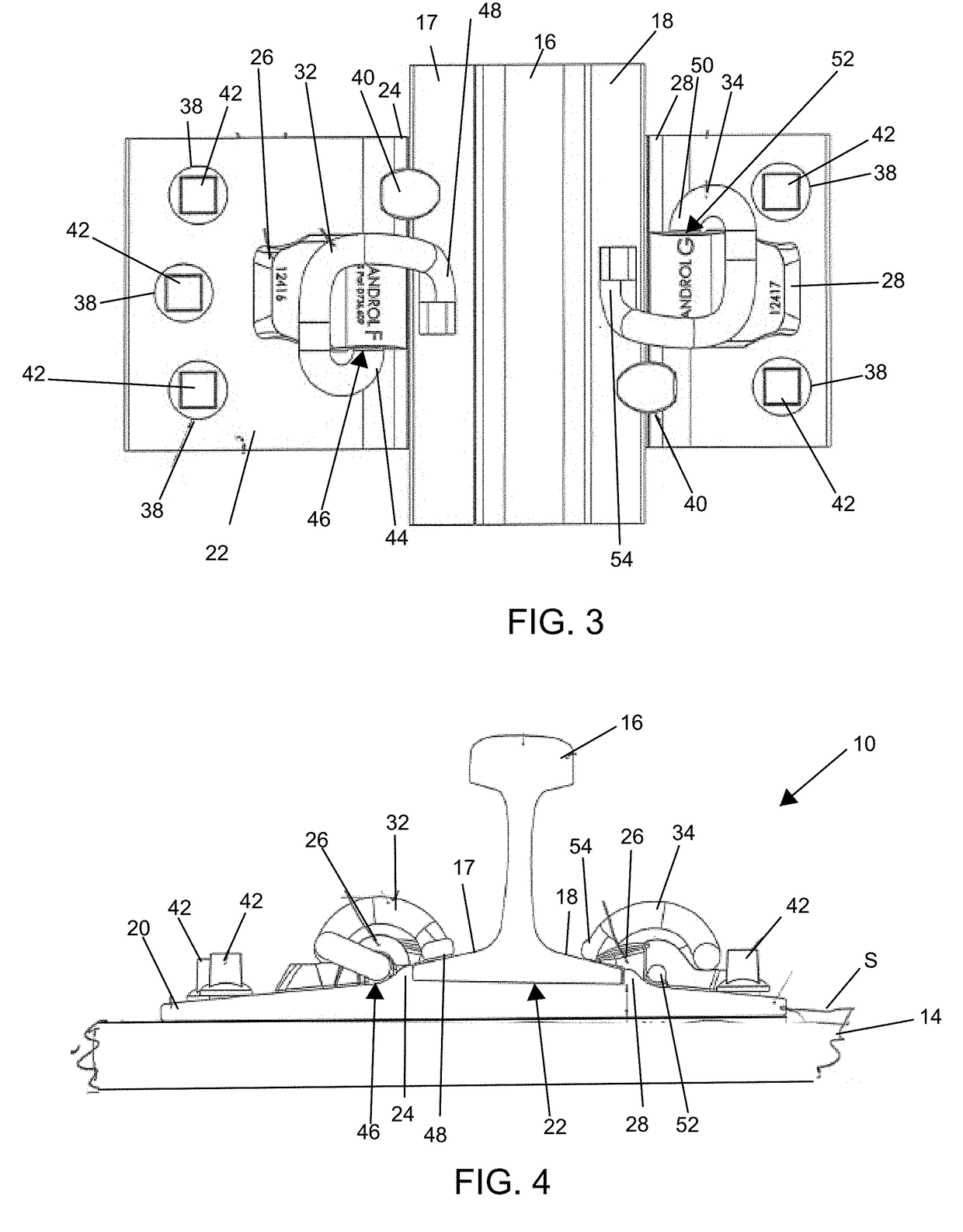Tie plate for railroad tracks with spike protectors
a technology of rail tracks and protectors, applied in railway fastenings, constructions, roads, etc., can solve the problems of spike cracking, spike breaking at the flexing point, delay in train movement, extensive property damage, etc., and achieve the effect of preventing the generation of deformation zones
- Summary
- Abstract
- Description
- Claims
- Application Information
AI Technical Summary
Benefits of technology
Problems solved by technology
Method used
Image
Examples
second embodiment
[0042]FIGS. 10 and 11 shows a tie plate assembly 200 that includes a tie plate 220 with a plurality of holes 236 that extend therethrough and sleeves 260 that extends through two of the holes 236. As shown, the holes 236 and sleeves 260 are both substantially square with the sleeves 260 fixed within holes 236 and extend from a first side of the plate 220.
third embodiment
[0043]FIG. 12 shows a tie plate assembly 300 that includes a tie plate 320 that has a plurality of holes 336 that extend therethrough sleeves 360 that extend from two of the holes 336. As shown, the holes 336 and sleeves 360 are both substantially square with one of the sleeves 360 fixed within one of the holes 336 formed in a first side of the plate 320 and another one of the sleeves 362 fixed within one of the holes 336 formed in a second side of the plate 320.
fourth embodiment
[0044]FIG. 13 depicts a tie plate assembly 400 fixed to a tie 14 with a rail 16 secured on the tie plate 420. Here, the tie plate 420 includes a plurality of first holes 436, second holes 438 and third holes 439 with first sleeves 460 extending through the first holes 436, second sleeves 462 extending through the second holes 438 and third sleeves 463 extending through the third holes 437. The straight spikes 40 are arranged snuggly within the first sleeves 460 and threaded spikes 42 are arranged in the second sleeves 462. As can be seen, the sleeves 460, 426 and spikes 40, 42 extend through the plate 420 and into the tie 14 to secure the plate 420 to the tie 14.
[0045]FIG. 14 is a partial cross-sectional view of the tie plate 420 of FIG. 13 showing the sleeves 460, 462 arranged in the first holes 436 and second holes 438, respectively.
[0046]FIG. 15 is a bottom view of FIG. 13 showing the holes 436, 438, 439 and the sleeves 460, 462, 463 arranged in the respective holes 436, 438, 439...
PUM
 Login to View More
Login to View More Abstract
Description
Claims
Application Information
 Login to View More
Login to View More - R&D
- Intellectual Property
- Life Sciences
- Materials
- Tech Scout
- Unparalleled Data Quality
- Higher Quality Content
- 60% Fewer Hallucinations
Browse by: Latest US Patents, China's latest patents, Technical Efficacy Thesaurus, Application Domain, Technology Topic, Popular Technical Reports.
© 2025 PatSnap. All rights reserved.Legal|Privacy policy|Modern Slavery Act Transparency Statement|Sitemap|About US| Contact US: help@patsnap.com



